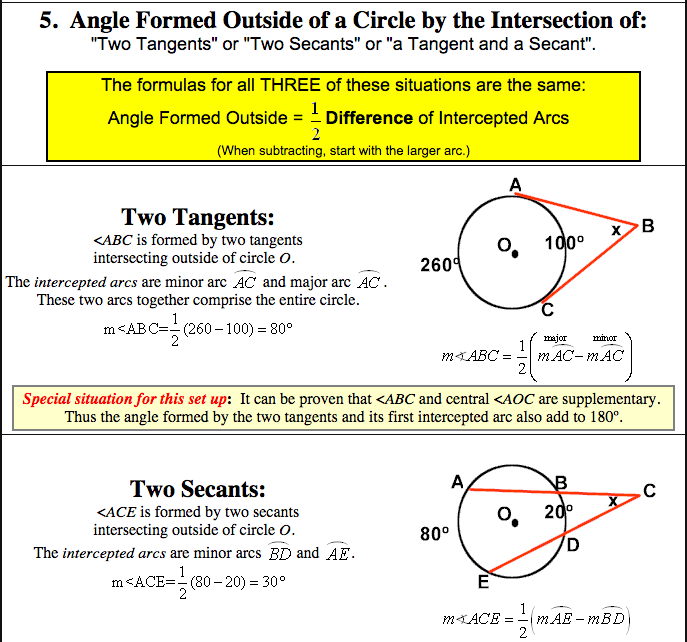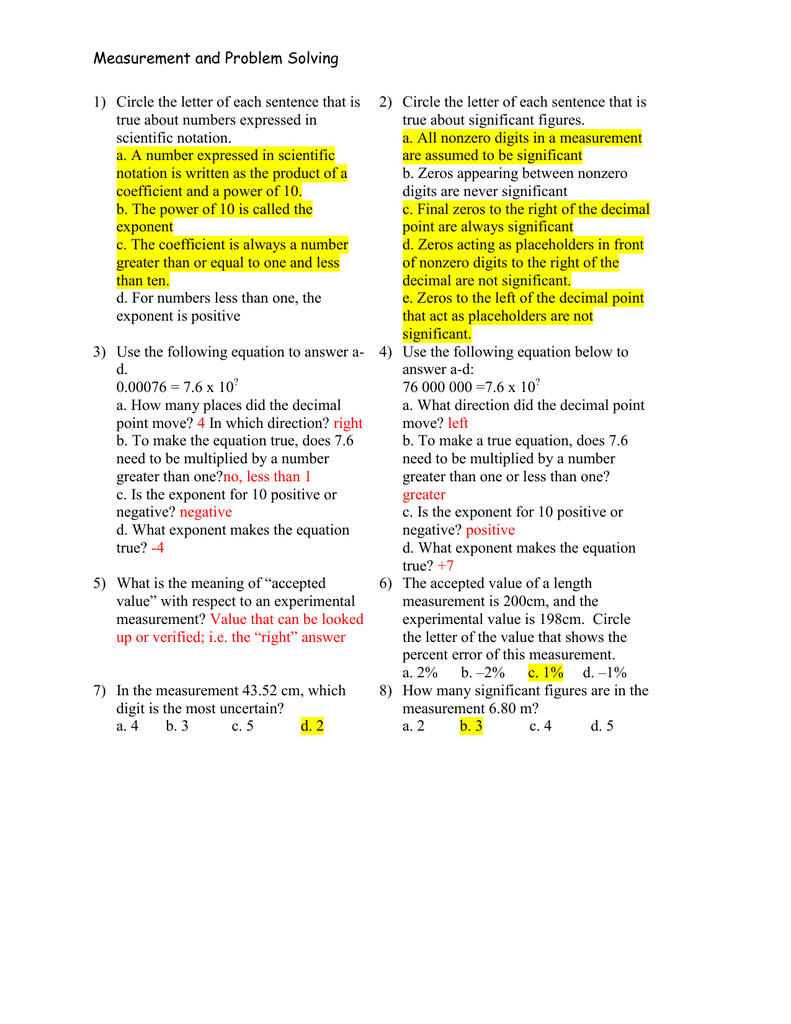Problem 1: The diameter of a cart wheel is 2.1 m. Find the distance traveled when it completes 100 revolutions. Solution: In order to find the distance covered in one revolution, we have to find the circumference of the circle. Circles Problem Solving Question. Ask Question Asked 3 years, 2 months ago. Active 3 years, 2 months ago. Viewed 844 times -1 $ begingroup$ My method.
- Grade 2 Math Problem Solving
- Angle Math Problems
- Math Problem Solving
- Solving Angles Problems
- Circles And Anglesmath Problem Solving
- Circles And Angles Math Problem Solving Worksheets
Draw a circle with a diameter (all the way across the circle) of 1
Then the circumference (all the way around the circle) is 3.14159265... a number known as Pi
- Define trigonometric ratios and solve problems involving right triangles. G-C: Understand and apply theorems about circles. This lesson also relates to the following Standards for Mathematical Practice in the Common Core State Standards for Mathematics, with a particular emphasis on Practices 2, 3, and 7: 1. Make sense of problems and persevere.
- This download includes a complete problem-solving journey to get your students thinking, including 2 unique, engaging, problem-solving tasks; the Problem, and its Exstemsion. Created by teachers, with teachers and parents in mind, each task is built to challenge students to use their prior knowledge, and think creatively as they strive to solve.
Pi (pronounced like 'pie') is often written using the greek symbol π
The definition of π is:
The Circumference
divided by the Diameter
of a Circle.
The circumference divided by the diameter of a circle is always π, no matter how large or small the circle is!
To help you remember what π is ... just draw this diagram.
Finding Pi Yourself
Draw a circle, or use something circular like a plate.
Measure around the edge (the circumference):

I got 82 cm
Measure across the circle (the diameter):
I got 26 cm
Divide:
82 cm / 26 cm = 3.1538...
That is pretty close to π. Maybe if I measured more accurately?
Using Pi
We can use π to find a Circumference when we know the Diameter
Circumference = π × Diameter
Example: You walk around a circle which has a diameter of 100 m, how far have you walked?

Also we can use π to find a Diameter when we know the Circumference
Diameter = Circumference / π
Example: Sam measured 94 mm around the outside of a pipe ... what is its Diameter?
Radius
The radius is half of the diameter, so we can also say:
For a circle with a radius of 1
The distance half way around the circle is π = 3.14159265...
Digits
Grade 2 Math Problem Solving
π is approximately equal to:
3.14159265358979323846…
The digits go on and on with no pattern.
π has been calculated to fifty trillion decimal places and still there is no pattern to the digits
Angle Math Problems
Approximation

A quick and easy approximation for π is 22/7
22/7 = 3.1428571...
But as you can see, 22/7 is not exactly right. In fact π is not equal to the ratio of any two numbers, which makes it an irrational number.
A really good approximation, better than 1 part in 10 million, is:
355/113 = 3.1415929...
(think '113355', slash the middle '113/355', then flip '355/113')
Summary:
| 22/7 | = | 3.1428571... |
| 355/113 | = | 3.1415929... |
| π | = | 3.14159265... |
Remembering The Digits
I usually just remember '3.14159', but you can also count the letters of:
'May I have a large container of butter today'
3 1 4 1 5 9 2 6 5
To 100 Decimal Places
Here is π with the first 100 decimal places:
| 3.14159265358979323846264338327950288 4197169399375105820974944592307816 4062862089986280348253421170679... |
Calculating Pi Yourself
There are many special methods used to calculate π and here is one you can try yourself: it is called the Nilakantha series (after an Indian mathematician who lived in the years 1444–1544).
It goes on for ever and has this pattern:
3 + 42×3×4 − 44×5×6 + 46×7×8 − 48×9×10 + ...
(Notice the + and − pattern, and also the pattern of numbers below the lines.)
It gives these results:
| Term | Result (to 12 decimals) |
|---|---|
| 1 | 3 |
| 2 | 3.166666666667 |
| 3 | 3.133333333333 |
| 4 | 3.145238095238 |
| ... | ... etc! ... |
Get a calculator (or use a spreadsheet) and see if you can get better results.
Pi Day
Pi Day is celebrated on March 14. March is the 3rd month, so it looks like 3/14
Learning Outcomes
Math Problem Solving
- Find the circumference and area of a circular object given it’s radius
- Find the circumference and area of a circular object given it’s diameter
- Calculate the diameter of a circular object given it’s circumference
Do you remember the properties of circles from Decimals and Fractions Together? We’ll show them here again to refer to as we use them to solve applications.
Properties of Circles
Solving Angles Problems
- [latex]r[/latex] is the length of the radius
- [latex]d[/latex] is the length of the diameter
- [latex]d=2r[/latex]
- Circumference is the perimeter of a circle. The formula for circumference is[latex]C=2pi r[/latex]
- The formula for area of a circle is[latex]A=pi {r}^{2}[/latex]
Remember, that we approximate [latex]pi [/latex] with [latex]3.14[/latex] or [latex]frac{22}{7}[/latex] depending on whether the radius of the circle is given as a decimal or a fraction. If you use the [latex]pi [/latex] key on your calculator to do the calculations in this section, your answers will be slightly different from the answers shown. That is because the [latex]pi [/latex] key uses more than two decimal places.
example
A circular sandbox has a radius of [latex]2.5[/latex] feet. Find the 1. circumference and 2. area of the sandbox.
Solution
| 1. Step 1. Read the problem. Draw the figure and label it with the given information. | |
| Step 2. Identify what you are looking for. | the circumference of the circle |
| Step 3. Name. Choose a variable to represent it. | Let c = circumference of the circle |
| Step 4. Translate. Write the appropriate formula Substitute | [latex]C=2pi r[/latex] [latex]C=2pi left(2.5right)[/latex] |
| Step 5. Solve the equation. | [latex]Capprox 2left(3.14right)left(2.5right)[/latex] [latex]Capprox 15text{ft}[/latex] |
| Step 6. Check. Does this answer make sense? Yes. If we draw a square around the circle, its sides would be [latex]5[/latex] ft (twice the radius), so its perimeter would be [latex]20[/latex] ft. This is slightly more than the circle’s circumference, [latex]15.7[/latex] ft. | |
| Step 7. Answer the question. | The circumference of the sandbox is [latex]15.7[/latex] feet. |
| 2. Step 1. Read the problem. Draw the figure and label it with the given information. | |
| Step 2. Identify what you are looking for. | the area of the circle |
| Step 3. Name. Choose a variable to represent it. | Let A = the area of the circle |
| Step 4. Translate. Write the appropriate formula Substitute | [latex]A=pi {r}^{2}[/latex] [latex]A=pi{left(2.5right)}^{2}[/latex] |
| Step 5. Solve the equation. | [latex]Aapprox left(3.14right){left(2.5right)}^{2}[/latex] [latex]Aapprox 19.625text{sq. ft}[/latex] |
| Step 6. Check. Yes. If we draw a square around the circle, its sides would be [latex]5[/latex] ft, as shown in part ⓐ. So the area of the square would be [latex]25[/latex] sq. ft. This is slightly more than the circle’s area, [latex]19.625[/latex] sq. ft. | |
| Step 7. Answer the question. | The area of the circle is [latex]19.625[/latex] square feet. |
We usually see the formula for circumference in terms of the radius [latex]r[/latex] of the circle:
[latex]C=2pi r[/latex]
But since the diameter of a circle is two times the radius, we could write the formula for the circumference in terms [latex]text{of}d[/latex].
[latex]begin{array}{cccc}& & & C=2pi rhfill text{Using the commutative property, we get}hfill & & & C=pi cdot 2rhfill text{Then substituting}d=2rhfill & & & C=pi cdot dhfill text{So}hfill & & & C=pi dhfill end{array}[/latex]
We will use this form of the circumference when we’re given the length of the diameter instead of the radius.
example
A circular table has a diameter of four feet. What is the circumference of the table?
Show SolutionSolution
| Step 1. Read the problem. Draw the figure and label it with the given information. | |
| Step 2. Identify what you are looking for. | the circumference of the table |
| Step 3. Name. Choose a variable to represent it. | Let c = the circumference of the table |
| Step 4. Translate. Write the appropriate formula for the situation. Substitute. | [latex]C=pi d[/latex] [latex]C=pi left(4right)[/latex] |
| Step 5. Solve the equation, using [latex]3.14[/latex] for [latex]pi [/latex]. | [latex]Capprox left(3.14right)left(4right)[/latex] [latex]Capprox 12.56text{feet}[/latex] |
| Step 6. Check: If we put a square around the circle, its side would be [latex]4[/latex]. The perimeter would be [latex]16[/latex]. It makes sense that the circumference of the circle, [latex]12.56[/latex], is a little less than [latex]16[/latex]. | |
| Step 7. Answer the question. | The diameter of the table is [latex]12.56[/latex] square feet. |
example
Find the diameter of a circle with a circumference of [latex]47.1[/latex] centimeters.
Circles And Anglesmath Problem Solving
Show SolutionSolution
Circles And Angles Math Problem Solving Worksheets
| Step 1. Read the problem. Draw the figure and label it with the given information. | [latex]C=47.1[/latex]cm |
| Step 2. Identify what you are looking for. | the diameter of the circle |
| Step 3. Name. Choose a variable to represent it. | Let [latex]d[/latex] = the diameter of the circle |
| Step 4. Translate. | |
| Write the formula. Substitute, using [latex]3.14[/latex] to approximate [latex]pi [/latex] . | [latex]C=pi{d}[/latex] [latex]47.1approx{3.14d}[/latex] |
| Step 5. Solve. | [latex]frac{47.1}{3.14}approxfrac{3.14d}{3.14}[/latex] [latex]15approx{d}[/latex] |
| Step 6. Check: [latex]C=pi{d}[/latex] [latex]47.1stackrel{?}{=}left(3.14right)left(15right)[/latex] [latex]47.1=47.1quadcheckmark [/latex] | |
| Step 7. Answer the question. | The diameter of the circle is approximately [latex]15[/latex] centimeters. |